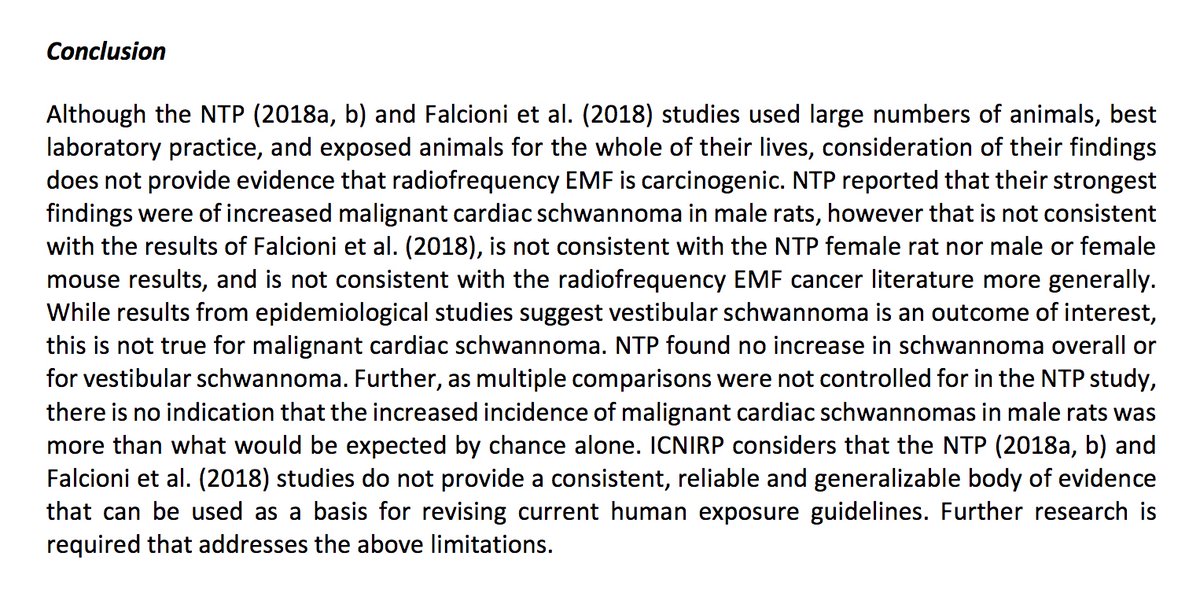“Further Research Is Required”
Louis Slesin from Microwave News reports:
ICNIRP Finds NTP & Ramazzini RF–Animal Studies Unconvincing https://microwavenews.com/short-takes-archive/icnirp-ntp-ri
The International Commission on Non-Ionizing Radiation Protection (ICNIRP) has determined that the two recent animal studies pointing to a cancer risk from cell phone radiation are not convincing and should not be used to revise current exposure standards.
In a “note” published today, the 12-member group states that the studies by the National Toxicology Program (NTP) and the Ramazzini Institute “do not provide a consistent, reliable and generalizable body of evidence.” “Both studies have inconsistencies and limitations that affect the usefulness of their results for setting exposure guidelines,” according to ICNIRP.
In contrast, a peer review panel of toxicologists and pathologists recently found that the NTP study showed “clear evidence” of RF carcinogenicity.
The current ICNIRP limits were set 20 years ago and are based only on acute effects. Two months ago, ICNIRP issued revised draft guidelines for public comment which are largely unchanged and also discount cancer risks.
Late last year, Maria Feychting, the vice chair of ICNIRP, was reported to be attempting to discredit the NTP study. See our “The Anatomy of a Rumor.”
On the other hand, Jim Lin, the editor-in-chief of Bioelectromagnetics and a 12-year former member of ICNIRP, recently wrote that, “Perhaps the time has come to judiciously reassess, revise and update [the ICNIRP] guidelines” so that they protect against long-term RF exposures.
Here are the conclusions of ICNIRP’s eight-page note, which was released today:

(L. Falcioni is the first author of the Ramazzini study.)
For more on the NTP study: go here.
And for more on the Ramazzini study, go here and here.


Image: Maria Feychting Vice Chair of ICNIRP
